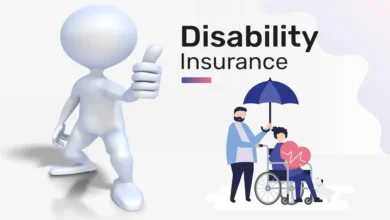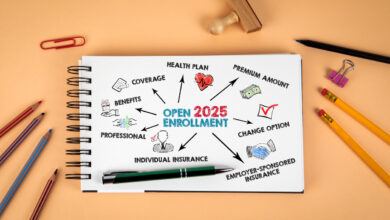Auto Insurance in 2025: Trends, Data, and Costs

Understanding auto insurance is a key part of planning your finances and protecting yourself against the unknown while driving. A lot has changed in the world of auto insurance in 2025, and not just in terms of our extensive experience training and delivering data through October 2023. By knowing these trends, you can make more informed decisions about your coverage and possibly save some money.
New Developments in Auto Insurance
Usage-Based Insurance (UBI): Pay-Per-Mile Coverage
As one of the more equitable structures that rewards accurate driving behavior, Usage-Based Insurance ( UBI ) is gaining huge traction. While traditional UBI policies rely on telematics data to monitor factors like lot mileage, speed and time of day. Safe drivers should see lower premiums and higher risk drivers should pay more.
- Potential Savings: If your driving behavior qualifies you for a UBI program, you could wonder anywhere from 5% to 30% off your premiums.
Benefits of UBI:
- Cost Savings: Pay-per-mile premiums tailored to actual usage and driving styles
- Safety Incentives: Potential discounts for safe driving
- Effects on the Environment: It may promote less driving, potentially lowering overall vehicle emissions.
Considerations:
- Data Privacy when Using Mobile: Tracking Mobile app tracking raises worries about information security whenever information is consistently mingled with an external server.
- Variable Costs: The cost of premiums can vary depending on driving behavior and miles driven.
Innovation: Merging AI with Telematics
How AI and telematics are changing auto insurance forever:
- Risk Assessment: It analyzes data including driving patterns, vehicle status, and historical claims to estimate more precise premiums for individual drivers.
- AI Assists in Claims Processing: Machine learning algorithms analyze vehicle damage to expedite claims and ensure quicker payouts, while also detecting potential fraud. For example, image recognition software can analyze photos of damage instantly, thereby accelerating the approval process.
- Telematics devices: Such as in-car sensors that are placed in the vehicle keep track of driving behaviors, location, and service needs in real-time, showing insurers a better picture of the risk involved.
Benefits:
- Usage-based policies: You pay a premium based on your driving behavior.
- Efficiency: A streamlined claims process helps resolve claims quicker.
- Improved Safety: Real-time monitoring can help you practice safer driving habits.
Considerations:
Having a Dream Job: Enjoy data collection and consumer surveillance.
Cybersecurity & Data Privacy Concerns: Cybersecurity threats and data privacy issues are prevalent risks.
Electric Vehicles (EV): New risk coverage needs
Electric vehicles come with their own insurance considerations:
- Faster EV Charging: In cons to ensure the EV fast charging process execution, while battery coverage may need the possible cost for a replacement of vehicle battery.
- Specialized Repairs: Includes covered repairs that demand specialized knowledge and parts.
- Incentives: Discounts for EV owners may be available as part of a sustainability program.
EV Car Insurance in 2025: Electric vehicles sometimes come with communication insurance that is sometimes higher than regular cars because of the replace and specialized technology. Some things, though like lower maintenance costs and less mechanical repairs might save you money over time.
Benefits:
- Pros on the other side of the argument: Environmental Impact: Fostering the shift toward sustainable transportation.
- Cost Savings: Potentially Lower Maintenance and Fuel Costs
Considerations:
- Charging: Access to charging: accessible charging stations may affect vehicle usage.
- Repair Costs: Potentially increased costs for specialized repairs.
Tips for Finding Cheap Auto Insurance
While navigating the ins and outs of auto insurance can seem complicated, by following along with the tips listed below, you can save big when it comes to coverage:
Compare Auto Insurance Quotes
And by getting quotes from several different insurers, you can compare prices and coverage. You can obtain quotes from several providers at the same time, which online platforms will often help facilitate, finding you competitive price points.
Tips:
- Bundle Policies: If you hold an auto and home insurance policy with the same insurer, these combined policies can often result in discounts for you generally, this could lead to 5% to 15% off your total insurance costs.
- Review Every Year: Keep an eye on your coverage to see if your needs have changed since the last policy.
Keep Your Driving Record Clean
A clean driving record can greatly reduce your insurance premiums. Steering clear of trouble on the road shows insurers that you are a low-risk driver, which reflects positively on your bottom line.
Potential Savings: You can save somewhere between 10% to 20% on your auto insurance premiums by keeping a clean driving record.
Benefits:
- Discount Eligibility: Many insurers offer safe driver discounts.
- Lower Rates: Having a clean record can results in better pricing.
Opt for Higher Deductibles
A higher deductible will lower your monthly premium. Just make sure that you can cover the deductible once you have to submit a claim.
For example, raising your deductible from $500 to $1,000 could and save you $50 to $150 a year on your premium, but make sure you can pay the $1,000 if you have to file a claim.
Considerations:
- Overall financial readiness: Check on whether you can cover the deductible, if necessary.
- Lower Premiums: Higher deductibles usually mean you’ll pay lower premiums.
Utilize Telematics Programs
Telematics program: Participating in a telematics program lets your insurer monitor your driving habits. Safely driving your car may earn a discount, while unsafe driving could lead to increased rates.
Benefits:
- Real-Time Data: With real-time data available, you get immediate feedback to help understand and correct your driving habits.
- THE POTENTIAL SAVINGS: Nothing to up to 30% or more off your total premium for safe driving
Considerations:
- Penalties for Risky Driving: If you tend to brake hard or accelerate quickly, you may be penalized in telematics programs.
- Privacy: Feel okay about data collection and monitoring practices.
Think About Uninsured/Underinsured Motorist Coverage
Uninsured/underinsured motorist coverage: This protects you if you’re in an accident with a driver who either doesn’t have enough insurance or no insurance at all. This is important to avoid potentially large out-of-pocket costs in those cases.
Benefits:
- Peace of Mind: Protects you from expensive medical and repair costs if you get into an accident with an uninsured driver.
- Affordable Addition: Often costs only a little extra to add to your policy.
Considerations:
- State requirements: Every state has its own rules when it comes to uninsured/underinsured motorist coverage.
- Cost vs Coverage: Consider how much you pay and what benefits you get.
November 2022: Auto Tariffs
Recent policy changes and the introduction of tariffs on imported vehicles and auto parts are having an impact on car ownership costs, including insurance premiums.
Potential Effects:
- Rising Costs of Vehicles: The tariffs can add to the cost of new, or replacement, parts.
- Higher Repair Costs: More expensive parts may lead to increased repair expenses.
- Insurance Premium Hikes: Insurance companies may transfer the cost of higher repairs onto consumers.
For example, A 10% tariff on aluminum could raise the cost of repairing a vehicle by $100 to $500, depending on the level of damage.
Recommendations:
- Stay Updated: Stay glimpse on vehicle costs if there is any changes in policy.
- Review Coverage: Make sure your policy covers the potential costs for repairs.
- Consider Vehicle Choice: Opt for vehicles with lower repair costs and availability of parts.
Conclusion
Auto insurance in 2025: Data scientists, influencers, and your driving habits Leading this narrative allows you to make financial and personal decisions, based on trends in current events, that work for you. By regularly reviewing your insurance options, having a safe driving record, and adopting new technologies, you can look forward to more personalized and affordable coverage.
Always reassess your vehicle insurance whenever your situation changes, and see if there are any savings discounts you can take advantage of. opt for usage-based insurance or telematics programs that reward safe driving behavior. Be aware of policy changes and their possible effect on your coverage and expenses.




